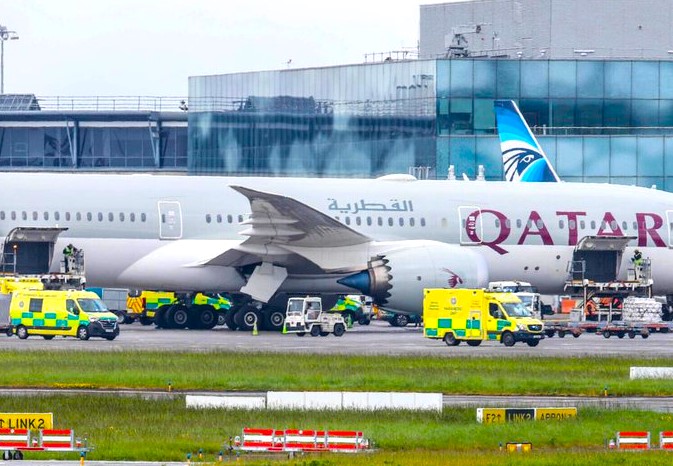


Weather condition in airspace has affected air transportation big time last seven days, starting with Singapore Airlines Boeing B777-300ER aircraft from London (LHR), that injured 71 passengers along with one fatality.
The flight SQ321 to Singapore was forced to suddenly divert to Bangkok. The cause of the deadly turbulence has not yet been determined, and the National Transportation Safety Board said it would send a team of investigators to look into the incident.
This is an worrisome trend as we can see the repeat of such incidents inflight. On this, U.S. Transportation Secretary Pete Buttigieg sounded the alarm bell on climate change, warning that it is already affecting modes of transit.
He noted that while incidents like the Singapore Airlines flight are "rare," the U.S. needs to be prepared to adapt to the changing climate.
"We've seen that in the form of everything from heat waves that shouldn't statistically even be possible, threatening to melt the cables of transit systems in the Pacific Northwest, to hurricane seasons becoming more and more extreme and indications that turbulence is up by about 15 percent. That means assessing anything and everything that we can do about it," he said in a Sunday interview on CBS News's "Face the Nation."
As per the Dublin Airport update on the social platform X, twelve people aboard a Qatar Airways flight were injured Sunday after the plane was hit with turbulence on its way to Dublin, is the latest incident involving turbulence.
The flight, operated by a Qatar Airways Boeing 787-9 Dreamliner aircraft (A7-BHM) that originated from Doha, landed at the Dublin Airport shortly before 1 p.m. and was met by emergency services after six passengers and six crew members reported injuries.
The incident prompted questions about turbulence and whether customers should anticipate more of it due to stronger jet stream winds driven by climate change.
The 12 injured individuals were assessed on the aircraft, eight of whom were taken to the hospital, as per the Airport sources.
Irish broadcaster RTE, citing passengers arriving at the airport, said the incident lasted less than 20 seconds and occurred during food and drinks service.
Qatar Airways confirmed the incident by saying,
"Qatar Airways can confirm that flight QR017 a Boeing B787-9 from Doha to Dublin has landed safely. A small number of passengers and crew sustained minor injuries in flight and are now receiving medical attention. The matter is now subject to an internal investigation. The safety and security of our passengers and crew are our top priority."
However, the Qatar Airways incident on Sunday happened just after two Turkish airlines narrow body planes were hit by turbulence while operating domestic flights in Turkiye.
In those two incidents, while a Turkish Airlines flight attendant suffered a broken spine after hitting the cabin ceiling during turbulence on the Istanbul-Izmir (ADB) flight TK2320 operated by an Airbus A321-231 aircraft, another Turkish Airlines Airbus A319-132 aircraft (TC-JLY), was diverted to Erzurum Airport (ERZ), while flying from Istanbul (IST) to Iğdır (IGD), due to adverse weather conditions.
In the second case, the aircraft's nose radome (TC-JLY) was damaged due to hail during the flight on Saturday.
From year 2009 through 2018, the U.S. agency — Federal Aviation Administration, found that turbulence accounted for more than a third of reported airline accidents and most resulted in one or more serious injuries, but no aircraft damage.
A study from the University of Reading last year found that severe in-air turbulence increased 55 percent between year 1979 and 2020, and the study suggests that the increase is "consistent with the effects of climate change."
The return flight to Doha was expected to take off as normal Sunday afternoon, and Dublin Airport's flight operations were unaffected by the incident, the Dublin airport said in its statement.
You may like to read....
